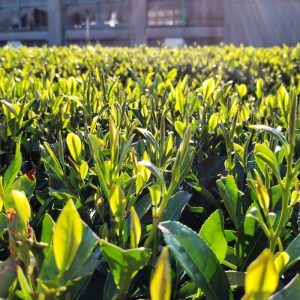
Saeakari (さえあかり), meaning “clear brightness”, is one of the cultivars that has been getting the attention of Japanese tea farmers in recent years.
This cultivar was developed in an effort to overcome the shortcomings of the more popular Saemidori cultivar, as we’ll see next.
History of Saeakari
Although Saemidori offers good quality and a high yield, it can only be cultivated in warm regions because it is susceptible to frost damage.
So in 1989 Saemidori was crossed with Z1, at present day Institute of Fruit Tree and Tea Science (果樹茶業研究部門) in Makurazaki, Kagoshima prefecture.
The best seedling was selected and in 2011 it was registered as tea cultivar number 55. It was later registered in 2012 under the Seed and Seedling law with the number 22070.
It’s name was chosen because it comes from Saemidori, and it gives a high quality under the brightness (akari) of the summer sun.
Characteristics of Saeakari
Saeakari has a strong resistance to anthracnose, gray blight, and the bacterial shoot blight.
However, it is rather weak against the blister blight and the white peach scale.
It resist cold better than Saemidori, although not as good as Yabukita.
Saeakari is a slightly early budding cultivar, about 2 to 5 days earlier than Yabukita. It’s also grows vigorously.
This cultivar fares well under the shade, so it is especially useful for making gyokuro.
It has a higher yield at the first and second harvest than Yabukita and Saemidori. Its first harvest is of comparable quality to both cultivars, while the second harvest is of better quality than their second harvest.
Once processed, it has an aroma with notes of steamed chestnuts, edamame and corn.
Its leaves are easy to roll into a thin and tight needle shape.
The good amount of umami taste is due to the high amino acid content in both the first and second harvest.

December 14, 2025
Great article on saeakari….Im going to try it on its own when I can